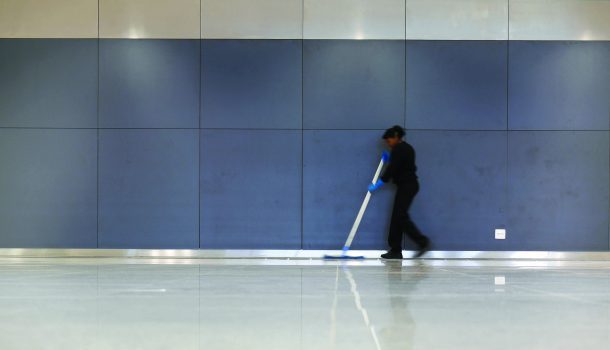
In April 2018 I attended Waste Expo at the Las Vegas Convention Centre – one on the world’s largest waste management events.
It was a wonderful learning and networking opportunity and I was amazed at the range of waste management related fields represented at the event. Health and safety was represented at a high level and I noted a significant emphasis upon fatigue related prevention which was certainly relevant to the nature of that industry.
There is plenty of literature indicating that musculoskeletal injury is most likely to occur in the colder months. In testing this I had previously examined five years’ of incident data within a large cleaning organisation and identified that the highest percentage of musculoskeletal injury occurred in the summer months which was an unexpected outcome.
After further research this lead to a recommendation that manual handling training programs should place a higher focus upon fatigue and hydration in order to be more effective.
Hydration
When the body is presented with more heat than it can manage it can lead to dehydration and heat stress. Of course contributing factors include humidity, temperature, clothing and physical activity.
The worst case scenario is the elevation of body temperature which may lead to heat stroke and potentially death. Furthermore, dehydration and heat stress can affect thinking and reaction times. This can put cleaners at higher risk of injury, for example stumbling on stairs or tripping on electrical cords etc.
As the body tries to cool itself down there will be increased sweating where one can lose around a litre of sweat an hour.
Unfortunately the sweat contains electrolytes which plays a further role in dehydration. According to the literature workers won’t feel thirsty until they have lost 1-2 per cent of their body weight in fluid. It is important that workers drink fluids to avoid dehydration with recommendations at 600ml to 1 litre per hour.
As workers get older the sensation of thirst decreases which increases the risk of dehydration. With certain sectors of the cleaning industry containing higher numbers of older cleaners then hydration is most important in these sectors.
In order to remain hydrated:
- Commence the day hydrated.
- Recognise the signs of dehydration (dry mouth, headache, thirst, fatigue, dizziness, dark urine and poor concentration).
- Allow cleaners time to remain hydrated particularly on hot days.
- Avoid working in direct sunlight particularly on hot days. This can be achieved by planning any outdoor cleaning activities in the early morning or later afternoon.
- Slip, slop, slap – slip into skin covering clothing that permits good airflow, slop on sunscreen where required, and slap on a hat – preferably a wide brimmed hat.
- Poor hydration shall result in fatigue. The risk of medical conditions such as stroke, heart, renal disease and asthma are reduced by good hydration. With all this in mind hydration and fatigue should be taken into consideration when developing and reviewing all aspects of an organisations safety management system.
Fatigue
According to the American College of Occupational and Environmental Medicine fatigue is defined as the body’s response to sleep deprivation or lengthy physical or mental hard work. Risk factors in relation to occupational fatigue include heavy workloads, medical conditions, work environment, lack of and/or poor sleep. Effects of fatigue may include increased errors, poor cognitive ability and slower reaction times.
Research has shown that people that work multiple jobs may be more vulnerable to fatigue. People who work several jobs get 40 minutes less sleep per day than those that work one job. In my experience many cleaners work a second job – hence the importance of training in fatigue management in the cleaning industry.
Furthermore, a national health survey in the United States estimated an annual injury incidence rate of 7.89 per 100 workers who sleep less than five hours per day. With workers that got seven to eight hours sleep per night then the annual injury incidence rate was 2.27 per 100 workers.
About 38 per cent of workers sleep less than seven hours a night. Hence, cleaners need to be educated about issues such as the importance of sleep, recognising fatigue, fatigue related hazards, diet, exercise and health conditions. Furthermore, cleaners need to understand the environmental aspects of the workplace that may result in fatigue such as lighting, temperature and low humidity.
Employers need to understand the importance of sleep and promote it, ensure cleaners take their breaks and strive for a safe workplace. Supervisors should be alert for signs of fatigue among cleaners and address any such issues on site. Furthermore any fatigue related matters should be investigated and followed up with systems review and training.
Safety bulletins issued to cleaners covering fatigue and hydration should be a priority. The safety bulletins should become a platform that documented on site toolbox meetings are based upon. Where contract managers are facilitating on site toolbox meetings they should aim to focus on the site specific aspects of the site and the tasks relevant to the site – this is particularly important considering the hazards of fatigue and hydration.
This first appeared in the July/August issue of INCLEAN magazine. To subscribe, click here.